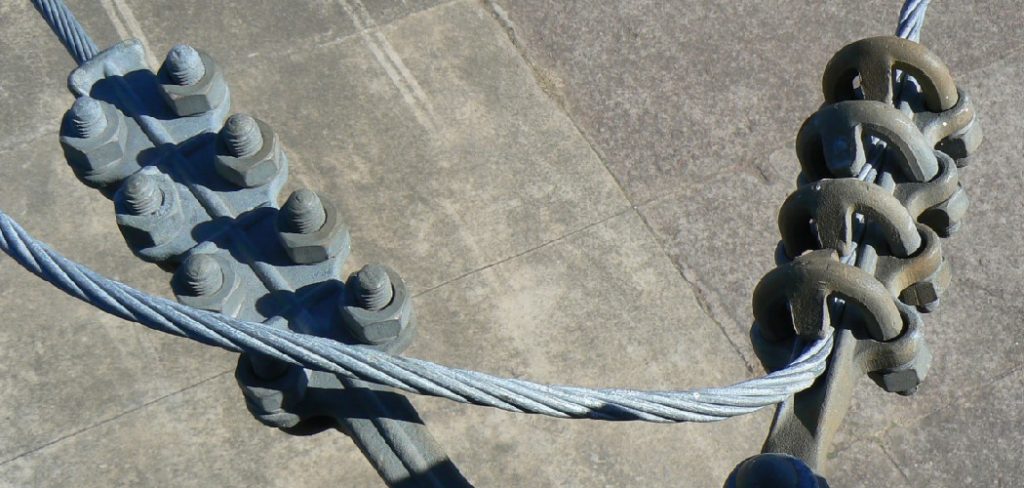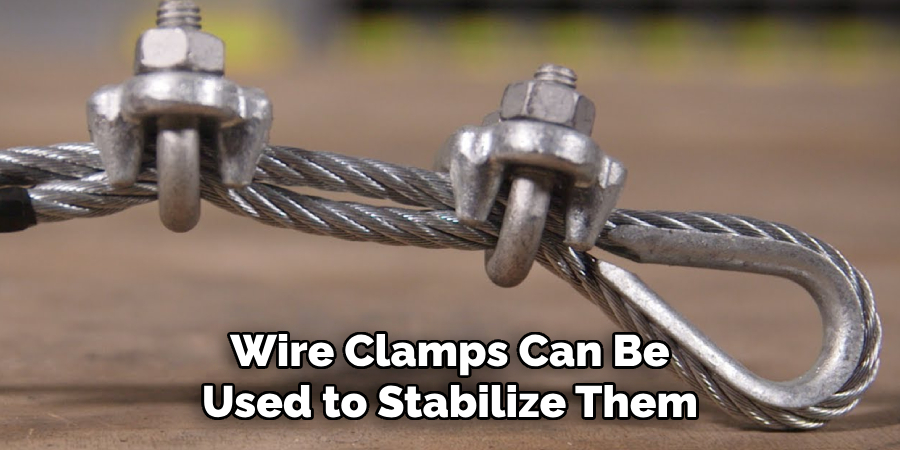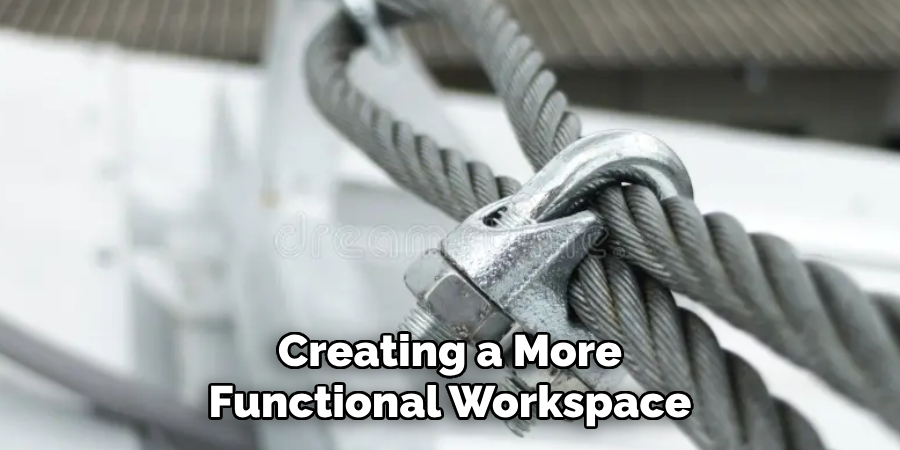Wire clamps are essential tools used to secure and organize wires, cables, or tubing effectively. They provide a simple and reliable solution for fastening materials in various applications, ranging from household projects to industrial setups. Whether you need to ensure safety, reduce clutter, or improve the durability of a wiring system, wire clamps offer a versatile and practical option. This guide will walk you through the how to use wire clamps properly for optimal results.

Importance of Wire Clamps
Wire clamps play a critical role in maintaining the integrity and organization of electrical and mechanical systems. By securely holding wires or cables in place, they prevent unnecessary movement that could lead to wear, fraying, or accidental damage. This is especially important in environments with vibration or frequent motion, where loose wires might pose hazards or compromise system functionality. Beyond protection, wire clamps contribute to a tidy, professional appearance in both residential and industrial setups, making maintenance and troubleshooting easier. Their versatility allows them to be used across a range of applications, from automotive wiring to complex machinery and household electronics, showcasing their undeniable importance in ensuring safety and efficiency.
Benefits of Using Wire Clamps
Wire clamps offer numerous advantages that make them indispensable in both professional and personal projects. Firstly, they enhance safety by securely holding wires and cables in place, reducing the risk of electrical shorts, tripping hazards, or accidental disconnections. Secondly, wire clamps help extend the lifespan of your wiring by preventing wear-and-tear caused by constant movement or friction. Additionally, they contribute to better organization by keeping wires neatly arranged, which improves system aesthetics and simplifies maintenance or upgrades.

Their versatility means they can be utilized in various settings, from automotive applications and industrial machinery to household appliances and DIY projects. Overall, wire clamps are a cost-effective solution that improves efficiency, durability, and safety in wiring systems.
Types of Wire Clamps
Wire clamps come in a variety of types, each designed to cater to specific needs and applications. Understanding the different options available can help you choose the right clamp for your project. Here are some of the most common types:
- Plastic Wire Clamps
These lightweight and cost-effective clamps are ideal for indoor applications or environments where minimal stress is applied to the wires. They are resistant to corrosion and come in various sizes to fit different wire diameters.
- Metal Wire Clamps
Made from durable materials like stainless steel or aluminum, metal clamps are best suited for heavy-duty applications. They provide excellent strength and reliability, making them ideal for harsh environments, such as automotive or industrial settings.
- Adhesive-Backed Wire Clamps
These clamps come with a self-adhesive backing, allowing for easy installation without the need for drilling or screws. They are perfect for lightweight cables and temporary setups, offering flexibility and convenience.
- Screw-Down Wire Clamps
Designed for maximum security, screw-down clamps use screws or bolts to fasten wires in place. They are particularly useful in environments with high vibration or movement, such as machinery or vehicle wiring systems.
- Snap-In Wire Clamps
These clamps feature a spring-loaded mechanism that allows wires or cables to snap into place. They provide a quick and efficient solution for situations where wires might need to be added or removed frequently.
- P-Clamps (Cushioned Clamps)
Equipped with a rubber or plastic lining, P-clamps secure wires while protecting them from abrasion and vibration. They are commonly used in automotive and aerospace applications for added durability and safety.
By selecting the appropriate type of wire clamp for your specific application, you can ensure a secure, organized, and long-lasting wiring system.
10 Clever Ways on How to Use Wire Clamps
Wire clamps may be small, but they pack a punch when it comes to functionality. These versatile tools can organize, secure, and improve all sorts of DIY and home improvement projects without breaking the bank. Whether you’re an experienced electrician or a weekend crafting enthusiast, knowing the many ways to use wire clamps can save you time, energy, and headaches.

Here are ten practical methods to make the most out of wire clamps.
1. Organize Messy Wires
Keeping wires and cables tidy is one of the most common uses for wire clamps. Whether you’re working on your workstation setup or organizing the entertainment system, use wire clamps to bundle and manage loose wires neatly.
Tip: Choose adjustable wire clamps for added flexibility as your cable setup evolves.
2. Secure Electrical Wiring in Place
When working with electrical projects, wire clamps are essential for fastening wires in place. They can prevent wires from sagging or becoming tangled, ensuring your circuits are secure and safe.
Pro Tip: When using wire clamps on electrical wiring, opt for insulated clamps to minimize the risk of wire damage.
3. Create a Secure Garden Setup
Wire clamps can help you secure garden equipment, hoses, or even plant ties in place. They’re especially great for attaching wires to trellises, fences, or stakes when you’re training climbing plants like tomatoes or ivy.
DIY Hack: Use stainless steel wire clamps to withstand outdoor weather conditions.
4. Mount Lights or Fixtures
Wire clamps are perfect for suspending or mounting lights and small fixtures during renovation or craft projects. This method is particularly handy for creating custom lighting solutions in hard-to-light areas like closets or garages.
Example: Install LED strip lights under cabinets securely with wire clamps to level up your kitchen design.
5. Stabilize Pipe or Tubing
Looking to keep pipes, tubes, or small hoses from shifting? Wire clamps can be used to stabilize them in place. This technique comes in handy for everything from plumbing repairs to setting up homemade aquarium systems.

Tip: Opt for non-corrosive metal clamps for plumbing to avoid future rust issues.
6. DIY Phone or Tablet Holders
Wire clamps can be surprisingly helpful for creating custom phone or tablet stands. Their adjustable and sturdy nature allows you to position devices for hands-free use while you’re working on other projects.
DIY Reminder: Be sure to add padding between the clamp and your device to avoid scratching its surface.
7. Hang Decorations or Artwork
If you’re searching for clever ways to hang lightweight items like decorations, wall art, or string lights, wire clamps offer a subtle and easy solution. They help hold items in place without damaging your walls.
Pro Tip: Use adhesive-backed wire clamps for temporary setups without needing nails or screws.
8. Build Custom Storage Solutions
Design storage solutions by using wire clamps to assemble shelves or secure storage bins in place. They serve as reliable fasteners for lightweight DIY shelving projects or wall-mounted solutions.
Example: Use wire clamps to attach jars or small containers to a board for craft supply storage.
9. Fix Broken Tools
Got a broken handle on a tool or a piece of furniture that’s come loose? Wire clamps can act as a quick fix to temporarily hold objects together while you decide on a more permanent solution.
Note: While this is a temporary solution, always ensure that the object is safe to use.
10. Improve Workshop Organization
Wire clamps help keep your workshop working efficiently. Use them to hang tools, secure hoses, or manage cables for your various power tools. They’re great for creating a more functional workspace with minimal effort.

Quick Tip: Opt for heavy-duty wire clamps for bigger tools to ensure they can handle the weight.
Maintenance and Upkeep
To ensure wire clamps perform optimally and last a long time, regular maintenance is essential. Begin by inspecting your wire clamps periodically for signs of wear, corrosion, or damage. This is especially important for clamps used in outdoor or high-stress environments, where exposure to elements like moisture or extreme temperatures can accelerate deterioration.
For metal clamps, check for rust or looseness, and tighten screws or bolts as needed. Applying a rust-resistant coating can help prolong their lifespan. Rubber or plastic-lined clamps should be examined for cracks or deformation, as these can compromise their grip and protective qualities. Replace any clamps that show significant wear or are no longer securing wires effectively.
Additionally, keep wire clamps clean by wiping away dust, dirt, or grease that may accumulate over time. For outdoor applications, ensure the clamps remain weatherproof, and consider switching to stainless steel or UV-resistant materials if you’re experiencing recurring issues. By taking these simple steps, you can extend the life of your wire clamps and maintain their reliability in all your projects.
Conclusion
Wire clamps are versatile, cost-effective tools that can simplify a wide range of tasks, from organizing cables to creating custom DIY projects. By understanding the different ways they can be applied and maintaining them properly, you can make the most of their practicality and durability. Whether you’re tackling a home improvement project, enhancing your workspace, or finding creative solutions to daily challenges, wire clamps are indispensable aids that combine functionality with convenience. Thanks for reading our blog post on how to use wire clamps! We hope you found it helpful and informative.
Edmund Sumlin is a skilled author for Metal Fixes, bringing 6 years of expertise in crafting a wide range of metal fixtures. With a strong background in metalwork, Edmund’s knowledge spans various types of fixtures, from decorative pieces to functional hardware, blending precision with creativity. His passion for metalworking and design has made him a trusted resource in the industry.
Professional Focus:
- Expert in Metal Fixtures : Edmund aesthetic specializes in creating durable and innovative metal fixtures, offering both appeal and functionality. His work reflects a deep understanding of metalworking techniques and materials.
- Sustainability Advocate : He is dedicated to using sustainable practices, ensuring that every fixture is crafted with eco-friendly methods while maintaining high-quality standards.
In his writing for Metal Fixes, Edmund provides valuable insights into the latest trends, techniques, and practical advice for those passionate about metal fixtures, whether they are professionals or DIY enthusiasts. His focus on combining artistry with engineering helps others discover the true potential of metal in design.


